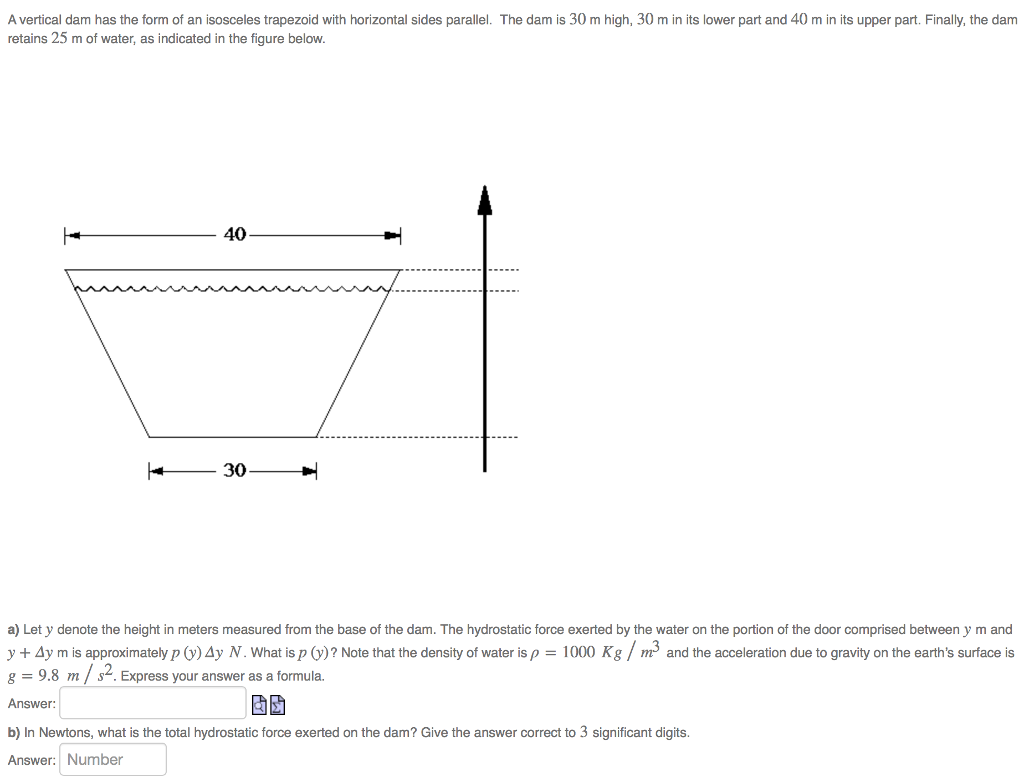
Example3: The vertical ends of a tank are semicircles of radius 10 ft. † † margin: y y x - 2 - 1 1 2 - 2 - 1 1 2 50 water line not to scale d ( y ) = 50 - y Figure 6.5.8: Measuring the fluid force on an underwater porthole in Example 6.5.4. Example1: Find the fluid force on a rectangular metal sheet measuring 3ft by 4ft. The truth is that it is not, hence the survival tips mentioned at the beginning of this section. (The weight-density of water is 9800 newtons per cubic meter. Question: Find the fluid force on the vertical side of the tank, where the dimensions are given in meters. Round your answer to two decimal places.) Parabola, y x2 lb 16. This problem has been solved Youll get a detailed solution from a subject matter expert that helps you learn core concepts. (The weight-density of water is 62.4 pounds per cubic foot. This is counter-intuitive as most assume that the door would be relatively easy to open. Find the fluid force on the vertical side of the tank, where the dimensions are given in feet. Transcribed Image Text: Find the fluid force on the vertical side of the tank, where the dimensions are given in feet.

Find the fluid force on the vertical side of the tank, where the dimensions are given in feet. Most adults would find it very difficult to apply over 500 lb of force to a car door while seated inside, making the door effectively impossible to open. Find the fluid force on the vertical side of the tank, where the dimensions are given Trapezoid 4 feet across the top, height of 3 feet, 2 feet across the bottom. Using the weight-density of water of 62.4 lb/ft 3, we have the total force as

We adopt the convention that the top of the door is at the surface of the water, both of which are at y = 0. Its length is 10 / 3 ft and its height is 2.25 ft. 62.SolutionThe car door, as a rectangle, is drawn in Figure 6.5.7.


 0 kommentar(er)
0 kommentar(er)
